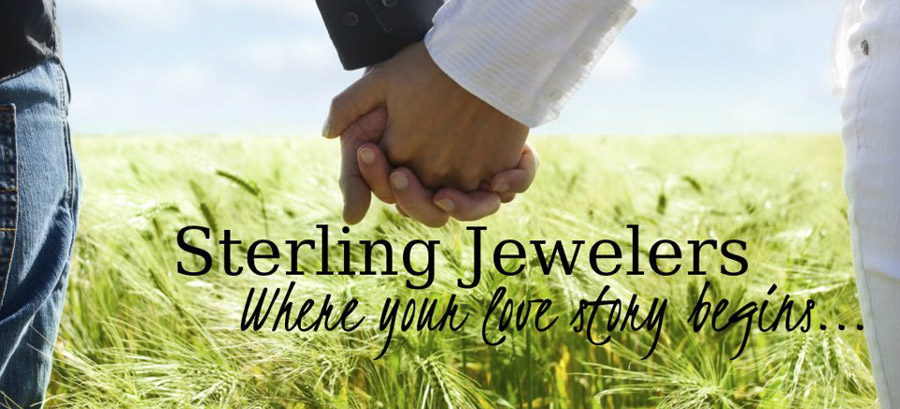March 23rd, 2016
Mode.com just released a style video that shines the spotlight on "100 Years of Engagement Rings." In barely three minutes, we're whisked down memory lane, where we get to see the evolution of the styles that have delighted brides since the early 1900s.
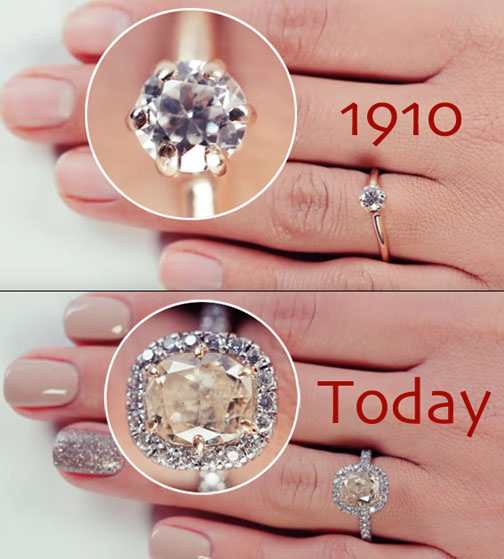
From the simple six-prong solitaires of the 1910s through the elaborate halo mountings and fancy-colored diamonds of today, the video rumbles through 11 popular styles — one decade at a time.
It's fascinating to watch the evolution of the diamond shapes, diamond sizes, metal types and mounting styles.
This is how Mode.com and estate-jewelry expert Peter Jon Shemonsky describe the rings in the video...

• 1910s. The classic solitaire diamond ring was a favorite at the beginning of the last century. This ring features a round Old European-cut diamond set into a six-prong 14-karat yellow gold mounting.
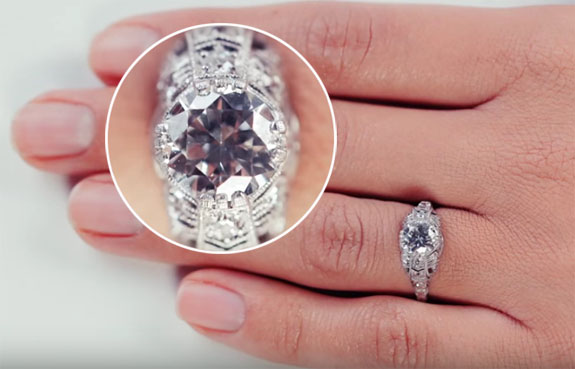
• 1920s. The lacy white-on-white look becomes the benchmark of the Edwardian period. A round Old European-cut diamond is set into a pierced openwork mounting highlighted by round diamonds. Milgrain detail puts the finishing touch on this platinum ring.
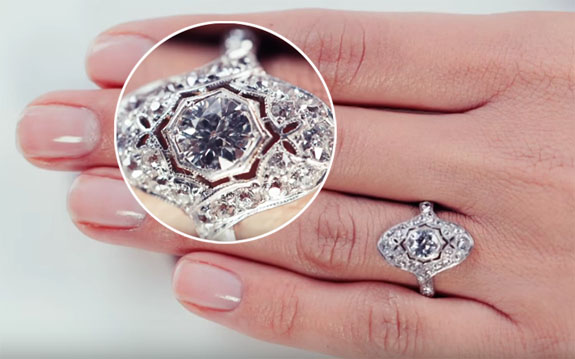
• 1930s. The streamlined geometry of the Art Deco period becomes reflected in the style of the mountings of this era. Round, early-modern brilliant-cut diamond is set into a platinum mounting highlighted by round diamonds in a pierced openwork motif.
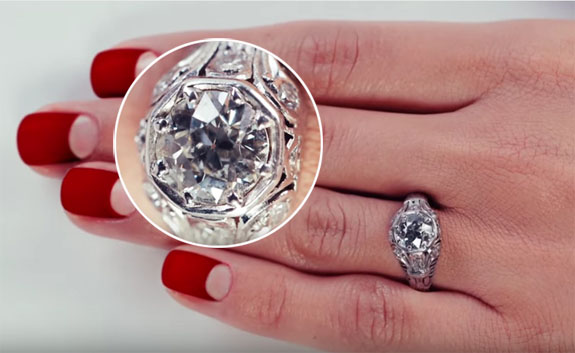
• 1940s. White gold became a popular metal during this period, along with the “filigree” mounting that heralded back to the Edwardian period. This ring features a round Old European-cut diamond set in a 18-karat white gold “filigree” mounting.
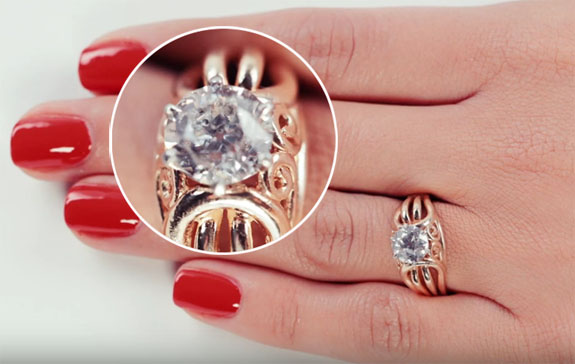
• 1950s. This period saw a shift to the use of yellow and rose gold with an increase in the scale of the jewelry. This 14-karat yellow gold ring displays a round Old European-cut diamond in a wirework mounting.
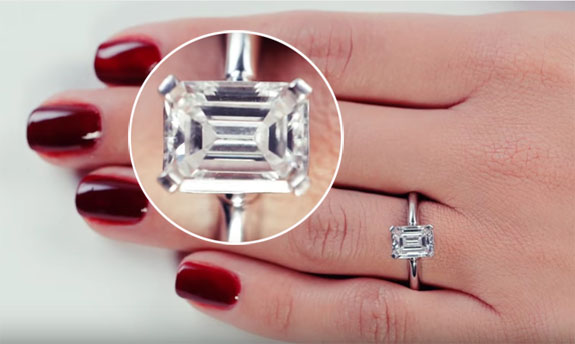
• 1960s. The 1960s saw an increased interest in fancy-shaped diamonds, especially emerald-cut, pear, marquise and heart-shaped diamonds. Platinum became the metal of choice. Here we see an emerald-cut diamond set in platinum.
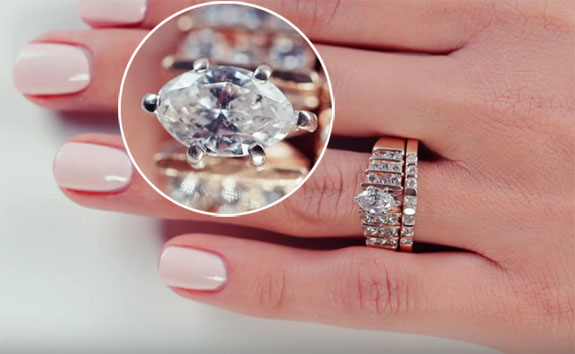
• 1970s. This period was all about the “gold” set with round or fancy-shaped diamonds, often with channel-set mountings and accompanying wedding bands. This ring features a marquise-shaped diamond set in yellow gold with channel-set round brilliant-cut diamonds and complementary wedding band.
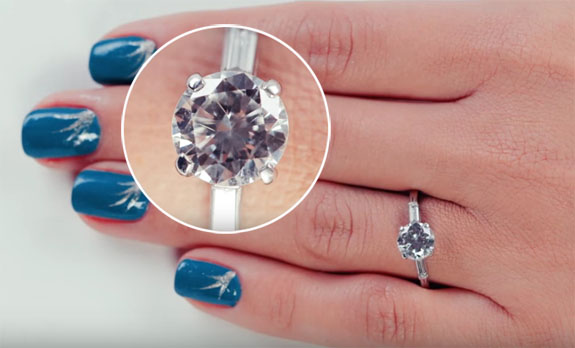
• 1980s. The solitaire reigns supreme set in the classic manner with baguettes on each side. This ring has a round brilliant-cut diamond flanked by rectangular baguettes mounted in platinum.
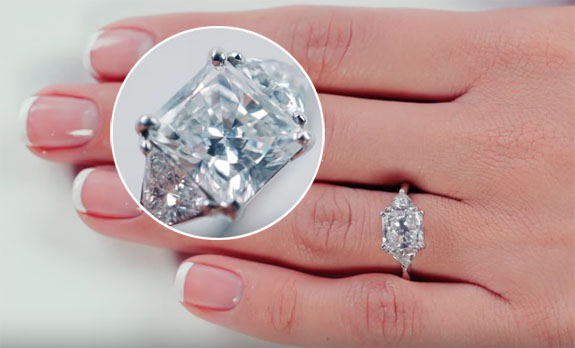
• 1990s. The “radiant cut” becomes the preferred fancy-shaped diamond of the period, typically set with triangular side stones. This 18-karat white gold ring fits that description exactly.
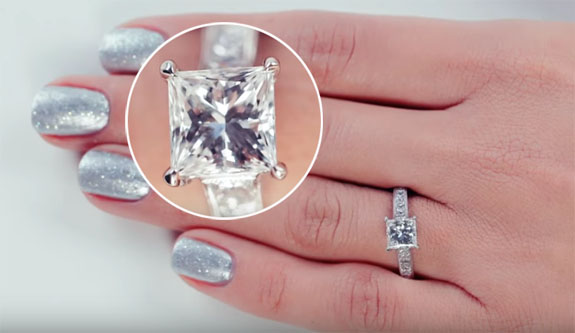
• 2000s. The “princess-cut” is the preferred fancy-shaped diamond of the period, as is illustrated by this engagement ring, which is accented with round brilliant-cut diamonds set into a band of platinum and white gold.
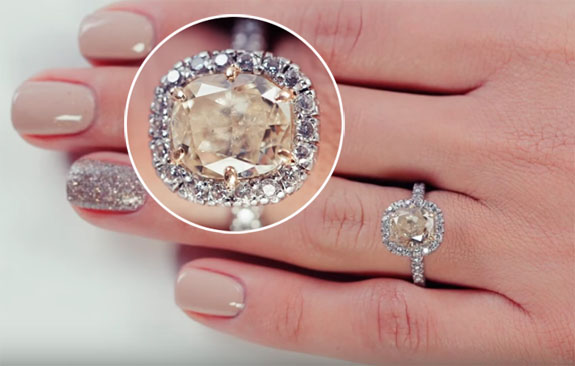
• 2010s. The “halo” mounting is all the rage, along with an increased demand for fancy-colored diamonds. This ring features a fancy yellow rectangular cushion-cut diamond set into a platinum “halo" mounting highlighted by round brilliant-cut diamonds.
Check out Mode.com's excellent video...
Images: Screen captures via YouTube/Mode.com

From the simple six-prong solitaires of the 1910s through the elaborate halo mountings and fancy-colored diamonds of today, the video rumbles through 11 popular styles — one decade at a time.
It's fascinating to watch the evolution of the diamond shapes, diamond sizes, metal types and mounting styles.
This is how Mode.com and estate-jewelry expert Peter Jon Shemonsky describe the rings in the video...

• 1910s. The classic solitaire diamond ring was a favorite at the beginning of the last century. This ring features a round Old European-cut diamond set into a six-prong 14-karat yellow gold mounting.

• 1920s. The lacy white-on-white look becomes the benchmark of the Edwardian period. A round Old European-cut diamond is set into a pierced openwork mounting highlighted by round diamonds. Milgrain detail puts the finishing touch on this platinum ring.

• 1930s. The streamlined geometry of the Art Deco period becomes reflected in the style of the mountings of this era. Round, early-modern brilliant-cut diamond is set into a platinum mounting highlighted by round diamonds in a pierced openwork motif.

• 1940s. White gold became a popular metal during this period, along with the “filigree” mounting that heralded back to the Edwardian period. This ring features a round Old European-cut diamond set in a 18-karat white gold “filigree” mounting.

• 1950s. This period saw a shift to the use of yellow and rose gold with an increase in the scale of the jewelry. This 14-karat yellow gold ring displays a round Old European-cut diamond in a wirework mounting.

• 1960s. The 1960s saw an increased interest in fancy-shaped diamonds, especially emerald-cut, pear, marquise and heart-shaped diamonds. Platinum became the metal of choice. Here we see an emerald-cut diamond set in platinum.

• 1970s. This period was all about the “gold” set with round or fancy-shaped diamonds, often with channel-set mountings and accompanying wedding bands. This ring features a marquise-shaped diamond set in yellow gold with channel-set round brilliant-cut diamonds and complementary wedding band.

• 1980s. The solitaire reigns supreme set in the classic manner with baguettes on each side. This ring has a round brilliant-cut diamond flanked by rectangular baguettes mounted in platinum.

• 1990s. The “radiant cut” becomes the preferred fancy-shaped diamond of the period, typically set with triangular side stones. This 18-karat white gold ring fits that description exactly.

• 2000s. The “princess-cut” is the preferred fancy-shaped diamond of the period, as is illustrated by this engagement ring, which is accented with round brilliant-cut diamonds set into a band of platinum and white gold.

• 2010s. The “halo” mounting is all the rage, along with an increased demand for fancy-colored diamonds. This ring features a fancy yellow rectangular cushion-cut diamond set into a platinum “halo" mounting highlighted by round brilliant-cut diamonds.
Check out Mode.com's excellent video...
Images: Screen captures via YouTube/Mode.com
